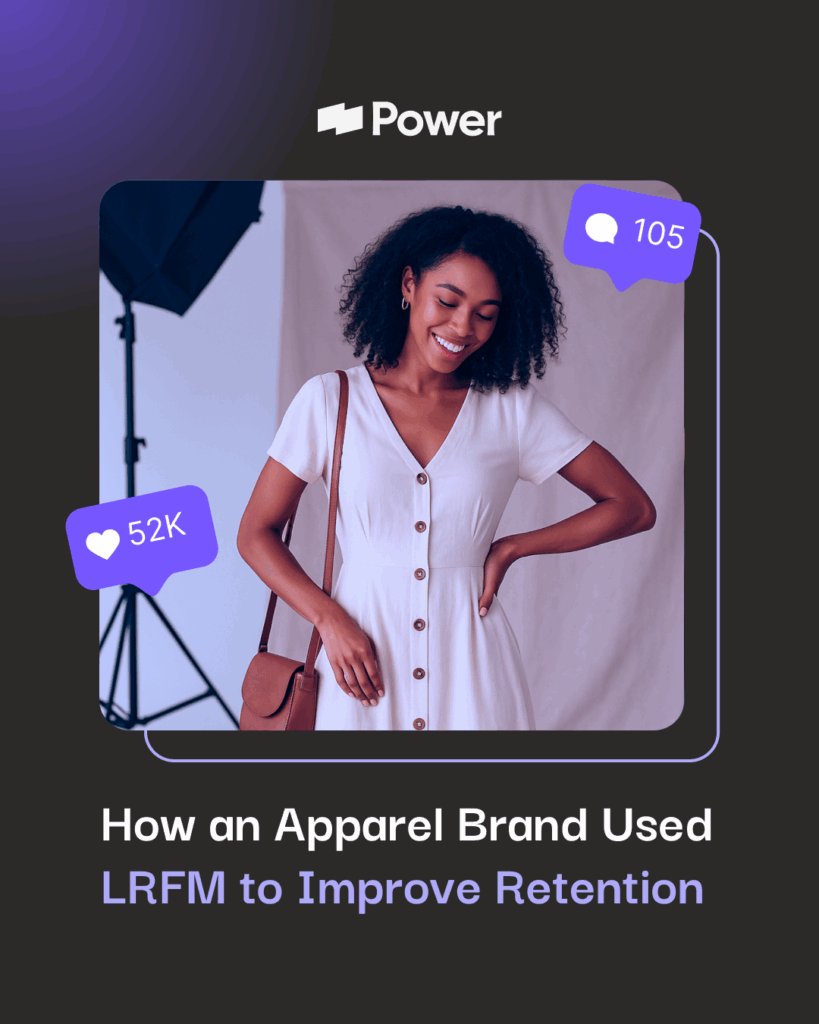E-Commerce SEO: 6 Quick and Crucial Tips for Business Owners

- 1. Tip #1 What to Include in Product Pages
- 2. Tip #2 The URL Structure of the Product Page
- 3. Tip #3 Picking the Right Keywords for E-commerce Websites
- 4. Tip #4 Detailed and SEO Optimized Product Descriptions with Keywords
- 5. Tip #5 Clear and Easy User-Experiences
- 6. Tip #6 Product Schema Markups
- 7. Final E-commerce For SEO Tips For Increase Search Rankings and Organic Traffic
The SEO strategy found on a product page is critical to the success of an e-commerce website. Customers need to have enough information to make an informed purchase decision, and the product page needs to be SEO optimized so it can be found on the Goliath that is Google or other search engines.
Tip #1 What to Include in Product Pages
The page must include all the information about the product to help customers make a decision. Educating and informing the user about the product in a straightforward way can help increase product sales. Our digital marketing agency suggests including the following:
- Product name
- Image(s) of the product
- Enlarged view of the image(s)
- Price, including any additional product-specific charges
- Clear product options, such as color and size, and a way to select them
- Availability of the product
- A straightforward way to add an item to the cart
- Make the checkout process easy and quick
- Concise and informative product description
- Security of the user’s data
- Reviews
- Fast load time
Tip #2 The URL Structure of the Product Page
Product pages are one of an e-commerce site’s most valuable assets as they are where the user ultimately converts into a customer. The key to successful PDPs (aka product development pages) is to ensure they’re optimized from both a user experience and SEO service perspective. If you have the right keyword strategy in place, but your on-site visuals and user experience are a mess, that defeats the purpose. Likewise, if your PDPs offer an impeccable page experience but no organic means for users to access your e-commerce site, that won’t serve your purpose either.
As we will discuss in further detail in the latter part of this article, content is crucial in digital marketing for bringing in SEO traffic and converting visitors. The unique structure of building an integrated content marketing strategy is equally as important. In other words, don’t templatize or regurgitate the same copy on your PDP content. Not only is this a mundane user experience for shoppers browsing multiple products, but Google may also flag this duplicate content and cannibalize your keyword rankings. One instance that is particularly prone to this issue is when e-commerce sites create individual URLs for color variations of different product SKUs. Most e-commerce sites recycle the product development page details on each variation and only change the headers to accommodate those color variations.
For example, a makeup company with a variety of matte liquid lipsticks in 12 different colors has 12 different URLs for that product based on each color variation. You may think this is an excellent opportunity to rank for long tail keywords like “purple matte liquid lipstick” or “red matte liquid lipstick,” and, if done correctly, there is such an opportunity. However, if these SKUs’ content is nearly identical, the risk of cannibalization for the keyword “matte liquid lipstick” far outweighs the potential benefits of these individual URLs. Creating unique content for each of these individual colors is an arduous task and often isn’t scalable for large e-commerce websites.
Individual URLs for all product color variations may also impact your site speed and crawl budget. If users are required to sift through multiple URLs for each of the product variations, the user experience can easily be disrupted as switching between variations requires an entirely new page to load. This multitude of pages also exponentially increases a website’s sitemap, potentially forcing Google down a rabbit hole of crawling and indexing versus allowing the engine to focus on your high-level priority pages.
Cannibalization potential, site speed, and crawl budget are a few of the many reasons why dynamic product pages with a single URL for color, size or quantity variation. Once you have the proper shell for your PDPs, it’s vital to fully understand how to optimize your content for SEO success.
Tip #3 Picking the Right Keywords for E-commerce Websites
Keyword research for an e-commerce site can seem deceivingly simple, but Google’s algorithm updates have made major changes to the SERP landscape over the last few years. A large portion of keyword ideas that we would traditionally think of as transactional keywords have shifted to become more informational. Google seems to have recognized that when someone is searching for a broad product keyword, they are probably still in research mode. Because of this, the search results continue to show more and more listicle articles. These allow users to read about a list of products or brands. The benefit of listicles is that a user can do comparison shopping, much like they would if they were in store. For example, if you walked directly into a Nike store, you may never know that Adidas shoes fit your feet better. Listicles create a more educated shopping experience that is most likely why the results for keywords like “running shoes” have changed over the years.
Keeping this information in mind, it is vital that you manually search any primary keyword that you’re considering targeting to evaluate what the search landscape looks like. The goal is to find relevant keywords that are showing other e-commerce sites on page one of Google. If the search results are only showing listicles, then it will be very challenging for you to rank on page one for that keyword. The entire search result doesn’t need to be e-commerce sites, but you want to find keywords that are showing at least a handful of e-commerce business sites on page one.
The health and wellness industry comes with its own set of challenges for e-commerce keyword research. When you search the name of most foods or health products, it’s likely that the search results will be filled with “health benefit” articles. For example, if I Google “chia seeds,” the search results show all informational articles and no websites that I could buy chia seeds from. You will most likely need to search for long tail keywords for the actual product or category page, so it’s crucial to lean into a strong blog strategy to be sure that you have a page that answers the question that Google believes users are searching for.
Tip #4 Detailed and SEO Optimized Product Descriptions with Keywords
Although many e-commerce stores base their layouts on major retail websites, this isn’t always the most useful format for SEO service purposes. Yes, Amazon and Target rarely need an SEO-focused written copy for their product descriptions or category pages simply because they can rank on links and branded popularity alone. But where does that leave the rest of us? Most clients you may work with or your own website may not have as much authority as these larger sites and will require a strategic focus from an SEO company to compete with the big dogs. So how do we achieve this?
By utilizing the correct search intent principles, we can carve our non-branded keyword opportunities for both product descriptions and category pages. Revising the product description or category page written copy is your opportunity to hit many relevant keywords that help give you increased relevance to Google. You can utilize many online tools for this specific task, and some will even give you a cumulative score on content improvement.
By targeting these non-branded opportunities for your product or category page, you give the product/category a chance to rank for something other than the direct branded term. For example, a category such as a “record player” has the opportunity also to target longer tail keywords like “Bluetooth turntable” or even “vintage style record player,” depending on the products. This is your best shot at pumping additional organic traffic into these pages. So while we love improved UI and a clean layout, we also love written page content even more for SEO ranking purposes.
Tip #5 Clear and Easy User-Experiences
The user experience design plays a pivotal role in the success or failure of any e-commerce website. It is essential that you make it easier, not harder, for customers to purchase your products on your e-commerce site.
Best Practices:
- Clear Call-To-Actions (CTA’s): Make the “Add to Cart” or “Buy now” buttons clear, consistent and highly visible on the page. These CTAs must be buttons rather than a hyperlinked text. Additionally, use a color that helps them stand out on the page.
- Product Photos: Product photos are vital to give the consumer vision of the product they are buying. Investing in great photography will help increase purchases. Additionally, provide access to multiple views and photos so the consumer can see different visuals of the product.
- Product Description and Content: Having quality content is important to help the user make an informed decision, and it is also vital to help the products rank. A great product page copy will include things like price, availability, sizes/colors, delivery options and more. Keep copy product pages concise and highlight the high points. Bullet points can help visitors read and digest the information quickly.
- Reviews: 70% of buyers are looking for reviews of products on online stores or forums before making a purchase. Therefore, if your site does not have reviews, you are missing a significant percentage of customers.
There are some key benefits to have reviews on your product pages:
- Customers are creating free and unique content on your website. Product reviews help solve the difficulty of providing unique content for product pages.
- Updating your site more frequently can have a great impact on your SEO efforts. Reviews help with this.
Tip #6 Product Schema Markups
Now it’s time to look beyond the human eye and discuss a simple code element of product listings. E-commerce SEO Tip #6 is about schema and how it offers rich snippets for Google and other search engines.
What are Rich Snippets?
Rich snippets are a feature of Google search results that offer detailed product information — sometimes including images and often including price, availability and review ratings. The benefit is that potential customers are served valuable information about your product directly on search engine results pages.
What is Product Schema?
Product schema, also called structure data, is a type of structure markup that helps search engines better understand web pages’ content. The schema markup tells search engine’s what the webpage entails. It also helps drive signals of trust and authority back to your website.
How to Create Rich Snippets using Product Schema?
Product schema is a script applied to the product information on a webpage. The script details the product information using programming languages such as HTML Micro-Data or JSON-LD.
Schema.org and Google Search Central are great resources for developers, SEOs or e-commerce enthusiasts to reference and see product schema examples.
Implement product schema dynamically or in a way that the script will automatically generate once new product pages or webpages are created on the website. Most CMS platforms offer apps or plugins that will quickly inject structured data scripts into the website’s code with ease. While there is no limitation in schema generator tools for Shopify, we like JSON-LD for SEO, and for WordPress, we like Yoast SEO with WooCommerce. However, there are plenty of other fantastic apps or plugins that offer product schema.
Why are My Rich Snippets Not Showing Up?
It is crucial to note that while schema markups are very beneficial for e-commerce SEO campaigns, rich snippet features are not a guarantee for every search result on Google or other search engines. Often rich snippet features are offered only for web pages that rank on page #1 for a specific search term. To troubleshoot why rich snippets or schema markups are not showing up on Google, check Google’s Rich Results Testing Tool for errors in the schema script’s code. If there are no errors, concentrate your ecommerce SEO efforts on Tip’s #1 – 4 of this article.
Final E-commerce For SEO Tips For Increase Search Rankings and Organic Traffic
SEO success is not easy or fast. However, it is vital for improving the content marketing funnel and building organic growth from search results. An SEO strategy takes time to see the improvement of ROI — depending on how your business defines ROI. Where PPC campaigns could drive traffic to a website in a day, an SEO campaign could take months.
That said, with a solid SEO foundation using tips in this guide, your website will have plenty of stones to cast against competitors and the Goliath of e-commerce.
Our Editorial Standards
Reviewed for Accuracy
Every piece is fact-checked for precision.
Up-to-Date Research
We reflect the latest trends and insights.
Credible References
Backed by trusted industry sources.
Actionable & Insight-Driven
Strategic takeaways for real results.




